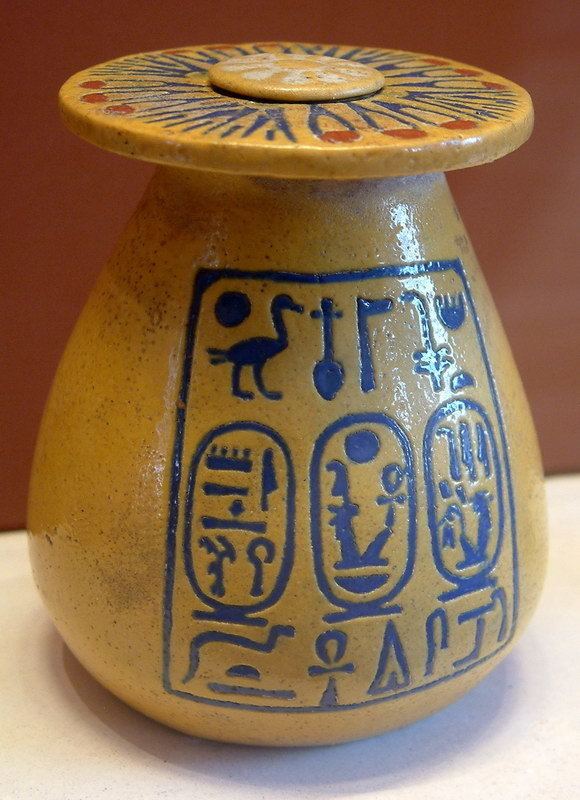 | ||
The ancient Egyptian Bread Cone is one of the oldest language hieroglyphs from Ancient Egypt. It was used in the early dynasties of Egypt, with usage at the time of the Pyramid Texts. The meaning of the Bread Cone is: "to give", "present".
Contents
Language usage: other words of "to give"
Since the concept "to give" is of common usage in human society, more than one word fulfilled this for the Ancient Egyptians. The usage of the Bread-cone in language is "di", to give, present. It became formulaic; for example: the pharaoh, "given-(bread-cone), Ankh-life, Endurance-(Djed), forever, like Ra".
Iconographic usage of Bread-cone
Since the usage of the Bread-cone was also formulaic, it often appeared in Ancient Egyptian hieroglyphic iconography. It is commonly found in the last line before an individual's name, but is used throughout texts: for example, gods are often referenced as giving items, accomplishments, gifts, products of the country, to the individual of whom it is being written.
Vessel for Pepi I's Sed festival
Pharaoh Pepi I, (reign 2332-2283 BC) celebrated his first Sed festival about 2302 BC, with a rather ornate alabaster vessel made by drilling the object's core with the ancient Egyptian hand drill. The object has hieroglyphic text in three vertical columns; also a horizontal text below the three, read from center, both leftwards and right.
The left column is read left as one column and is the Pharaoh's 'serekh name'. Column center, (Nebty name), and right are read as columns 2, then 1 and column 1 exclaims his sed festival: "first occurrence, S-d festival" (with 3 festival determinative hieroglyphs-Pavilion, Hall, and Festival).
The line of text below with the Bread-cone used twice for reading both left-and-right, (and 'Kingship' for "usr"-(power)), "Given 'Living-Kingship' Forever"-(di-ankh-usr-djet). (see also the phrase: "Long Live the King")
